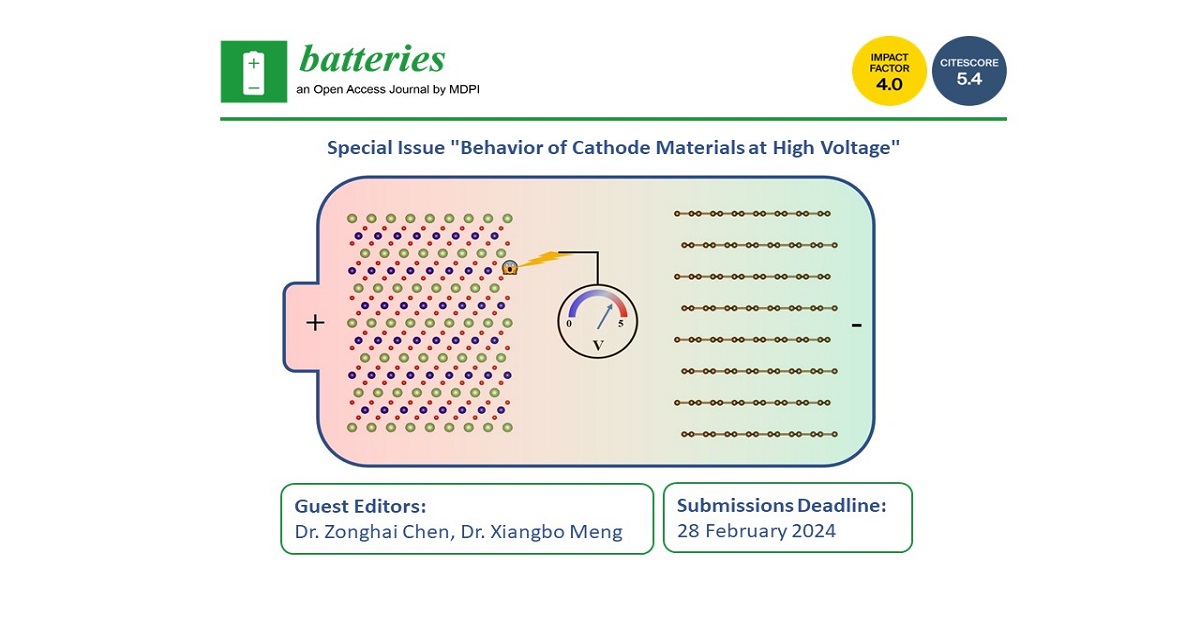Behavior of Cathode Materials at High Voltage
A special issue of Batteries (ISSN 2313-0105).
Deadline for manuscript submissions: closed (28 February 2024) | Viewed by 5489

Special Issue Editors
Interests: lithium-ion batteries; electrode/electrolyte interface
Interests: lithium-ion batteries; lithium metal batteries; battery interface engineering
Special Issues, Collections and Topics in MDPI journals
Special Issue Information
Dear Colleagues,
High-energy-density lithium-ion batteries are actively pursued for applications in electric vehicles to reduce our dependence on non-renewable fossil fuels. Among all cell components in LIBs, the cathodes that behave as the Li-supplying reservoir are currently the dominant factor limiting the energy density and cost. There is a clear trend to develop high-voltage cathodes for a better utilization of precious lithium reservoirs and to unlock their potential for a higher energy density.
In this Special Issue, we are seeking contributions helping to address the following:
- Understand the behavior of cathode materials at a high voltage;
- Understand the stability of the cathode–electrolyte interface;
- Illustrate the failure mechanisms through advanced characterization;
- Investigate the functionality of cathode materials and the cathode–electrolyte interface through multiscale modeling;
- Develop mitigating solutions to improve the stability of the cathode materials and the cathode–electrolyte interface.
Dr. Zonghai Chen
Dr. Xiangbo Meng
Guest Editors
Manuscript Submission Information
Manuscripts should be submitted online at www.mdpi.com by registering and logging in to this website. Once you are registered, click here to go to the submission form. Manuscripts can be submitted until the deadline. All submissions that pass pre-check are peer-reviewed. Accepted papers will be published continuously in the journal (as soon as accepted) and will be listed together on the special issue website. Research articles, review articles as well as short communications are invited. For planned papers, a title and short abstract (about 100 words) can be sent to the Editorial Office for announcement on this website.
Submitted manuscripts should not have been published previously, nor be under consideration for publication elsewhere (except conference proceedings papers). All manuscripts are thoroughly refereed through a single-blind peer-review process. A guide for authors and other relevant information for submission of manuscripts is available on the Instructions for Authors page. Batteries is an international peer-reviewed open access monthly journal published by MDPI.
Please visit the Instructions for Authors page before submitting a manuscript. The Article Processing Charge (APC) for publication in this open access journal is 2700 CHF (Swiss Francs). Submitted papers should be well formatted and use good English. Authors may use MDPI's English editing service prior to publication or during author revisions.
Keywords
- lithium-ion battery
- cathode
- cathode electrolyte interface
- high voltage
- surface modification
- electrolyte






